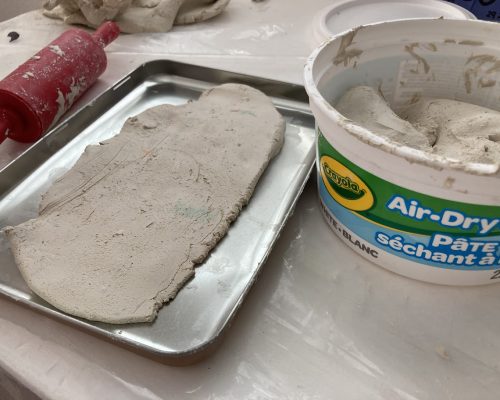Ancient civilizations. Writing
My daughter and I started learning about ancient civilizations and how people lived a long time ago. I told her that long ago, people needed writing systems for their growing societies. They needed to record and store important information, as well as send messages. But they didn’t have computers, smartphones, or even paper like we do today. Instead, they used the materials that were available in the area where they lived, such as clay, wood, rocks, bones, and papyrus, to write and preserve their knowledge.
Writing by scratching letters on a paint-coated surface
First, we learned about the scratching technique of writing. We didn’t use wood or bones but instead, we made DIY black scratch paper and got a scratching tool. Here is a non-DIY option.
My daughter scraped some simple shapes, straight lines, and curves on the black scratch paper. The idea behind this activity was to show how different shapes and lines lay the groundwork for letter formation.

She mentioned that this required some effort to scrape the symbols or pictures on the paint-coated surface. It gave her a new level of appreciation for our modern means of writing.
Writing on clay tablets
We learned that in some ancient civilizations, people used clay tablets to write important laws, records of trades and sales, and events, among other things. These clay tablets were like the “notebooks” of ancient times, helping people learn, remember, and pass down their stories to future generations.
The people of ancient civilizations would take soft clay and shape it into flat, rectangular tablets. Then, using a special stick (e.g., stylus) they would make marks on the clay. These marks represented their words and ideas.
We got Crayola air-dry clay and shaped it into a clay tablet with a playdough rolling pin. Then, using a cake pastry carving cutter, my daughter scribed symbols and shapes on her clay tablet.

We tried to replicate some of the symbols used by Sumerians a long time ago to write about food, water, drink, and eating. We learned that they used a drawing of a river to communicate “water” and combined it with a symbol for “mouth” to write “to drink water”. Similarly, they used a picture of a bowl to represent “food” and combined it with the symbol for “mouth” to write “drink”.

This was much easier than scratching letters on a paint-coated surface because the clay was soft, and it was fun to work with. This inspired her to make a whole bunch of things that people in ancient civilizations used in their daily lives: pots, cups, decorations, and sculptures.
We might do a similar activity with clay tablets when my child is older, and we could learn about Cuneiform, Mesopotamia, Persia, etc.
Making Papyrus
We have a book about ancient civilizations that contains a number of stories about ancient Egypt. We read about Egyptian pyramids, papyrus, and their writing system.
Papyrus was made anciently from reeds that grew near the Nile River in Egypt. The Egyptians would cut the reeds into thin strips and layer them on top of each other to create a kind of paper. They then pressed the layers together and let them dry. The result was a smooth surface, much easier to write on than small bones, ivory, clay, or stone. They used brushes and inks made from natural sources to write on papyrus.
We attempted to recreate this process, to make our own papyrus, using other materials. Since we didn’t have any papyrus plants nearby we settled on using corn leaves instead.
I found a website with instructions on how to make papyrus out of corn husks: “How to Make Papyrus Paper With Cornhusks.”

We made our own paste using flour and water (I decided to add a small amount of Elmer’s glue after the flour paste had cooled down). It took approximately 3 days for the entire corn paper to dry out.
We read a bit about hieroglyphs, and my daughter tried to recreate some symbols on our homemade “papyrus”.
We had fun learning about some of the writing methods used long ago. I believe that this knowledge was beneficial to my daughter as she learned to write herself. It was fascinating for her to see how people in the past found creative ways to communicate and record their stories and ideas.
Subscribe to our Newsletter
Thank you!
You have successfully joined our subscriber list.